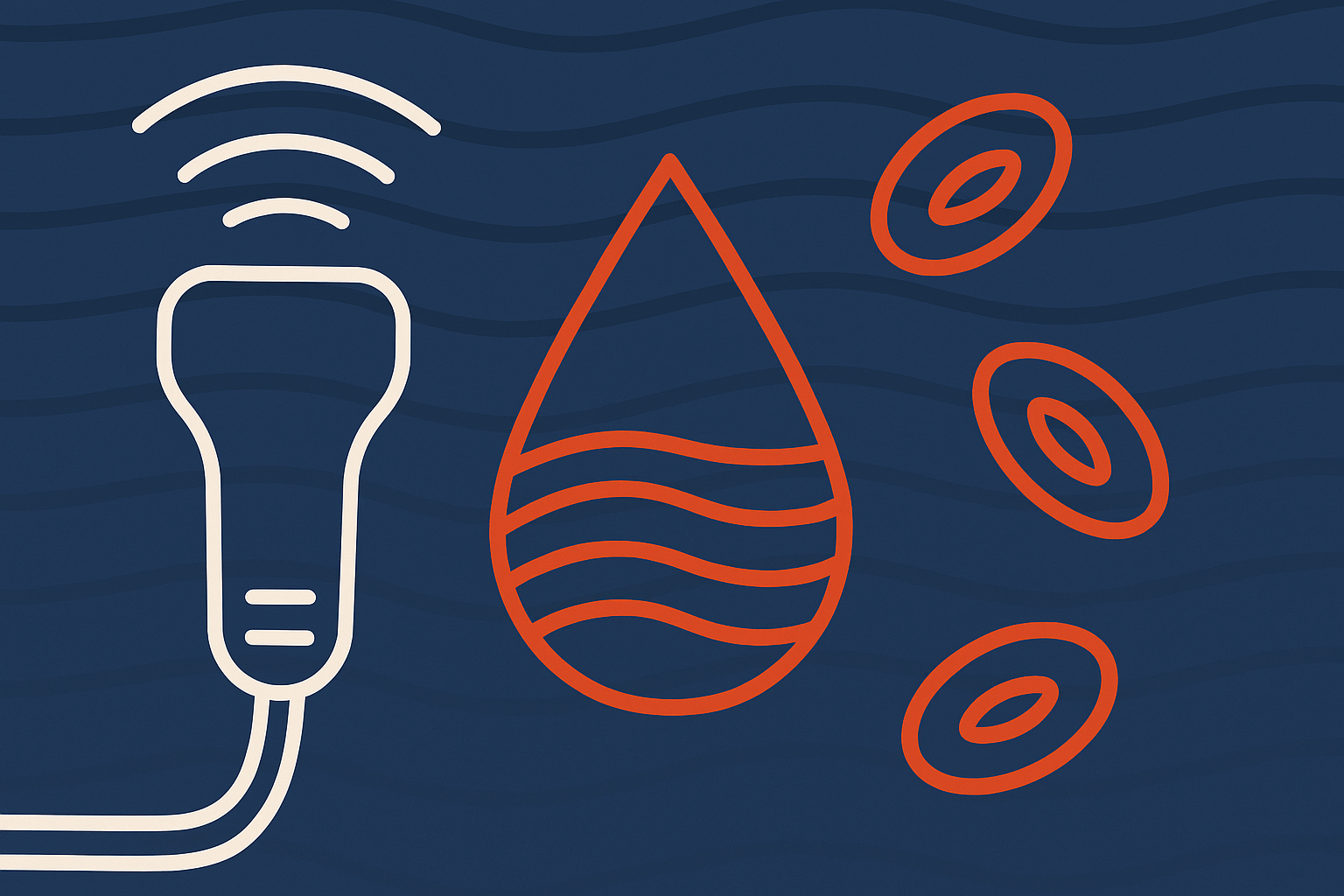A team of researchers at the University of Missouri has developed a non-invasive ultrasound device that can measure blood viscosity in real time, offering a new way to monitor cardiovascular health and disease progression. Blood viscosity—the thickness or stickiness of blood—has long been overlooked in routine diagnostics, despite its connection to heart disease, stroke, cancer, and other leading causes of death.
The new device uses continuous-wave ultrasound to assess both viscosity and density simultaneously. It sends a steady sound wave through the bloodstream and analyzes how the wave interacts with the blood. A proprietary algorithm interprets these interactions to calculate viscosity without the need to draw blood, preserving the fluid’s natural properties and enabling in situ monitoring.
One of the key advantages of the device is its ability to capture blood behavior as it occurs inside the body. Traditional lab methods often alter the sample’s properties, making them unsuitable for dynamic monitoring. Tan emphasizes that blood is a living organ whose characteristics change when removed from circulation. Measuring viscosity in real time allows clinicians to observe how blood responds to disease, treatment, or environmental stressors.
In proof-of-concept studies, the team demonstrated that the device could detect changes in viscosity caused by variations in hematocrit levels and protein concentrations. These findings suggest that the technology could be used to monitor conditions such as sickle cell anemia, where abnormal blood cell shapes increase viscosity and threaten organ health.
The device’s low hardware requirements make it ideal for portable applications. Researchers envision future versions that could track viscosity alongside other vital signs such as heart rate and oxygen saturation. This capability could help tailor interventions for patients based on their real-time physiological state rather than relying on fixed treatment schedules.
Article from Mizzou: Mizzou researchers pioneer ultrasound technology to measure blood viscosity
Abstract in ournal of Dynamic Systems, Measurement, and Control: A Model-Based Method for In Situ Viscosity Measurement With Continuous-Wave Ultrasound

